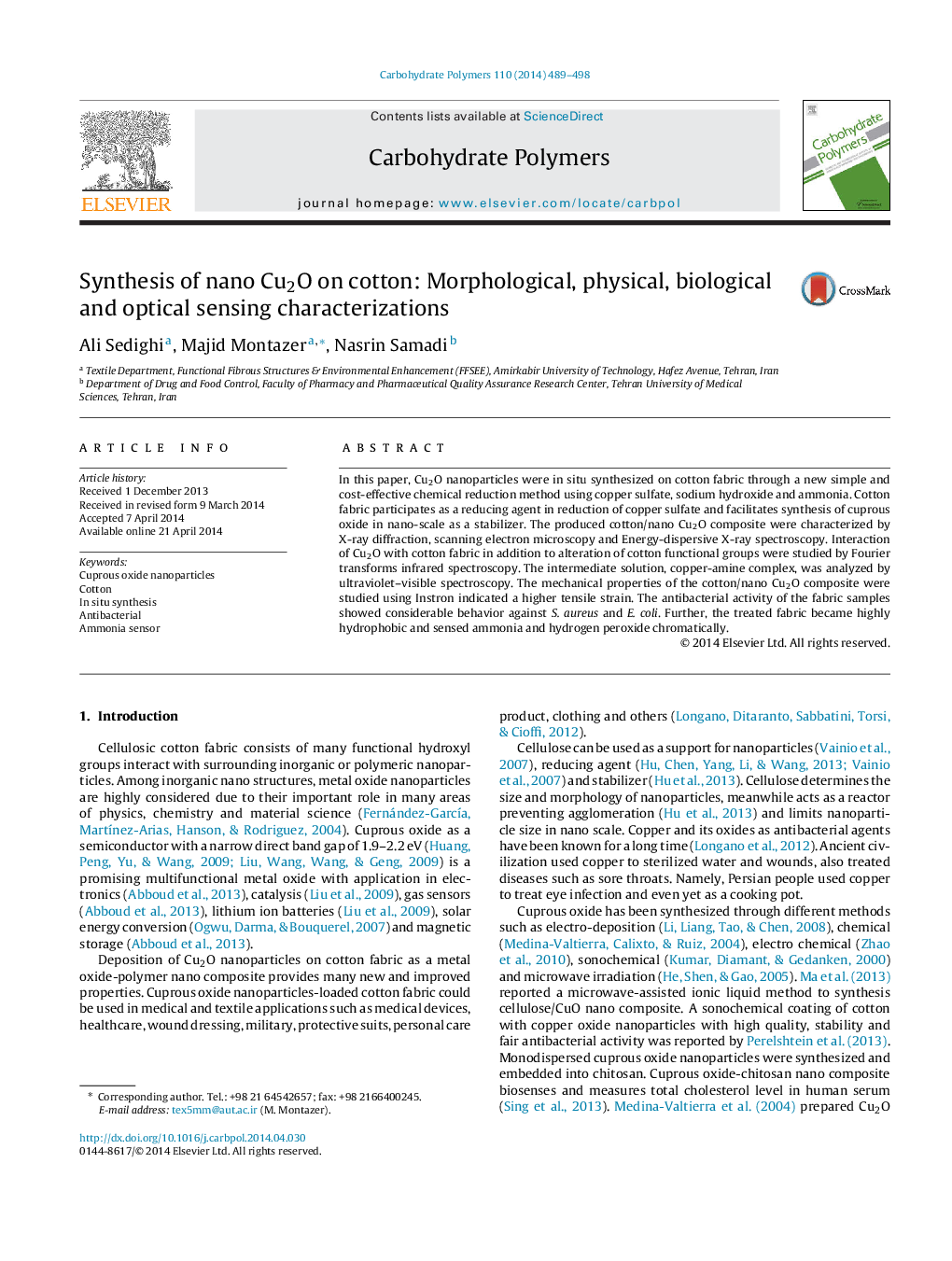| Article ID | Journal | Published Year | Pages | File Type |
|---|---|---|---|---|
| 1385860 | Carbohydrate Polymers | 2014 | 10 Pages |
•In situ synthesis of Cu2ONPs on cotton fabric with a simple and cost effective process.•High washing durability of treated fabric even after repeated washings.•Remarkable antibacterial effect on the treated cotton fabric.•Enhanced tensile strain and hydrophobicity of the treated cotton fabric.•Reversible optical sensing of ammonia and H2O2.
In this paper, Cu2O nanoparticles were in situ synthesized on cotton fabric through a new simple and cost-effective chemical reduction method using copper sulfate, sodium hydroxide and ammonia. Cotton fabric participates as a reducing agent in reduction of copper sulfate and facilitates synthesis of cuprous oxide in nano-scale as a stabilizer. The produced cotton/nano Cu2O composite were characterized by X-ray diffraction, scanning electron microscopy and Energy-dispersive X-ray spectroscopy. Interaction of Cu2O with cotton fabric in addition to alteration of cotton functional groups were studied by Fourier transforms infrared spectroscopy. The intermediate solution, copper-amine complex, was analyzed by ultraviolet–visible spectroscopy. The mechanical properties of the cotton/nano Cu2O composite were studied using Instron indicated a higher tensile strain. The antibacterial activity of the fabric samples showed considerable behavior against S. aureus and E. coli. Further, the treated fabric became highly hydrophobic and sensed ammonia and hydrogen peroxide chromatically.
Graphical abstractFigure optionsDownload full-size imageDownload as PowerPoint slide
